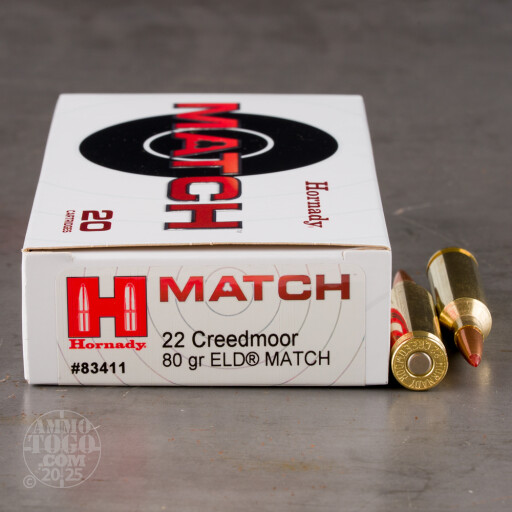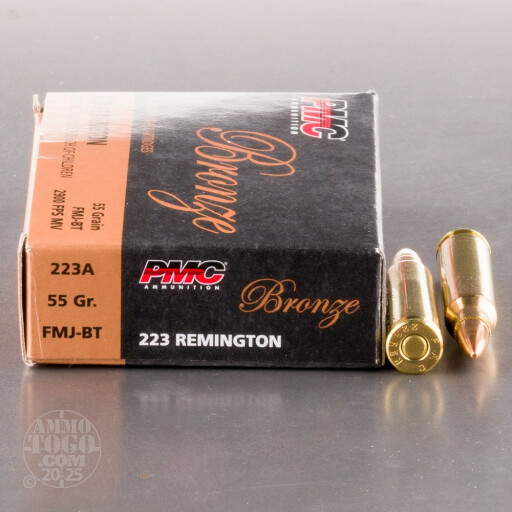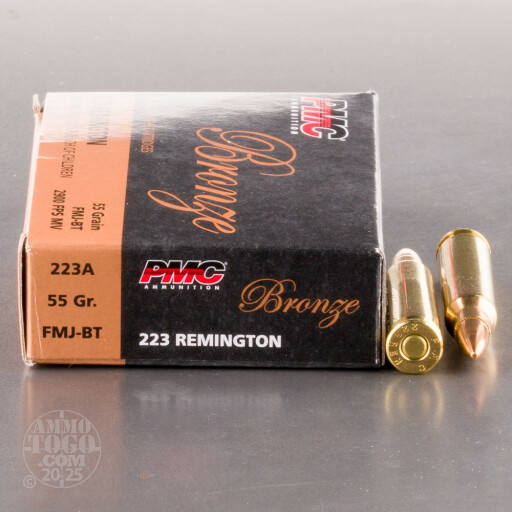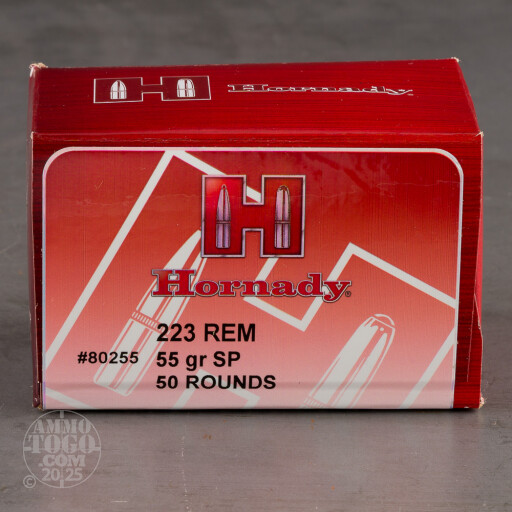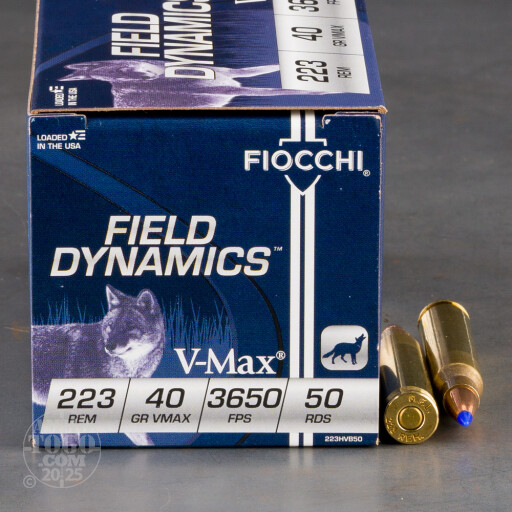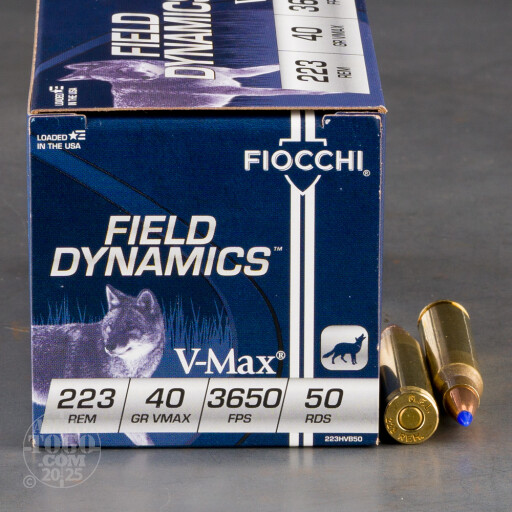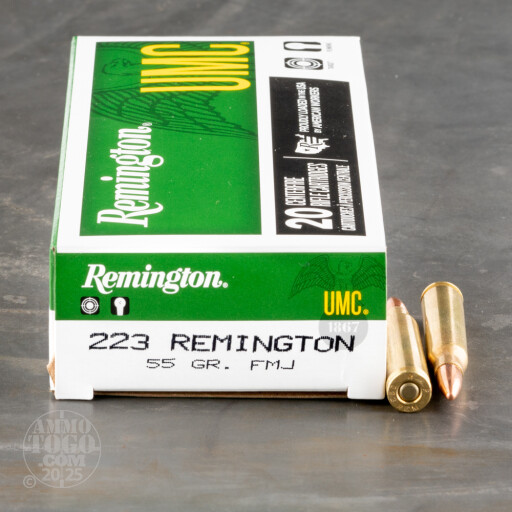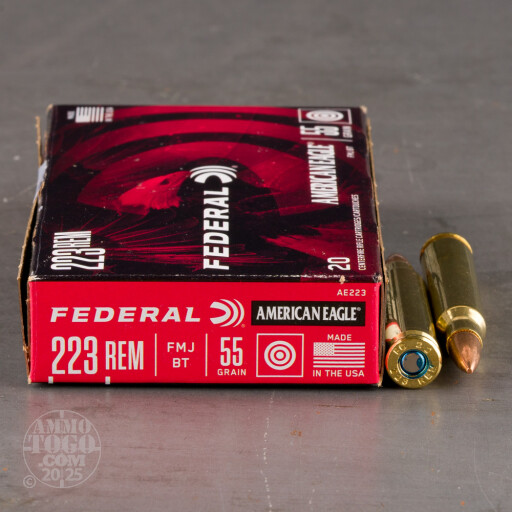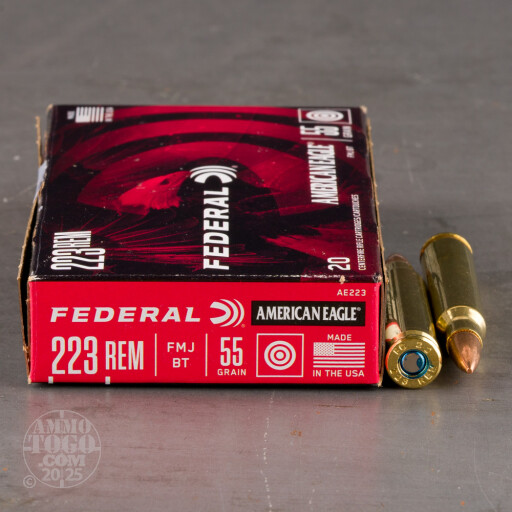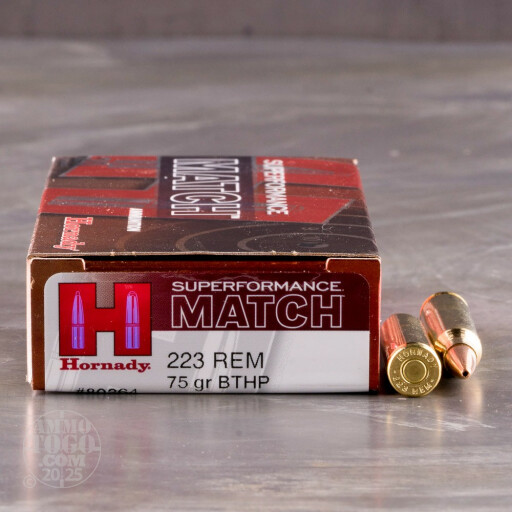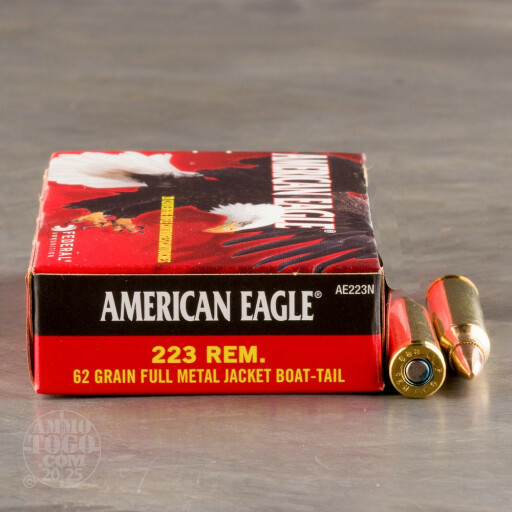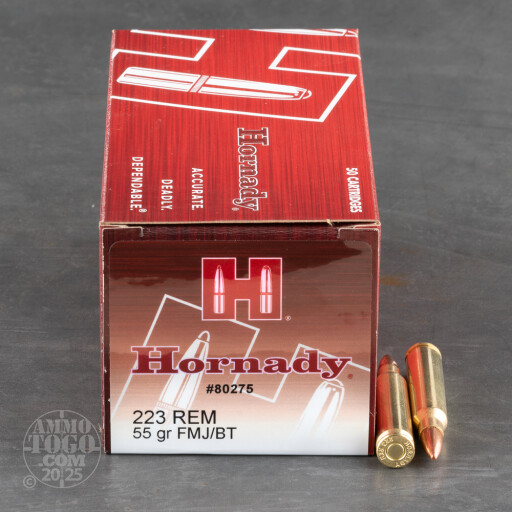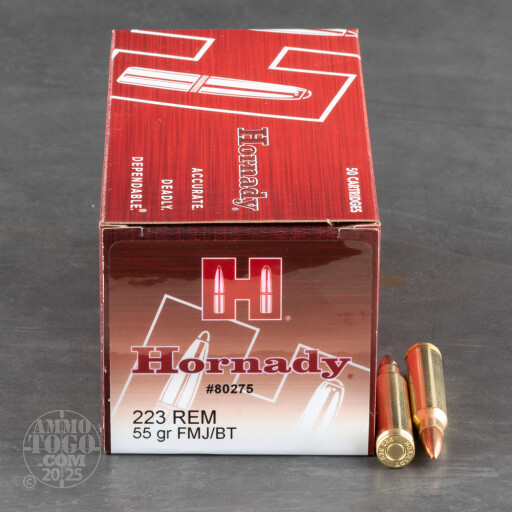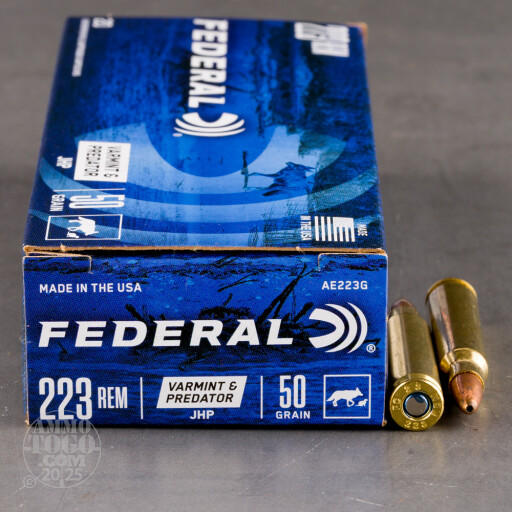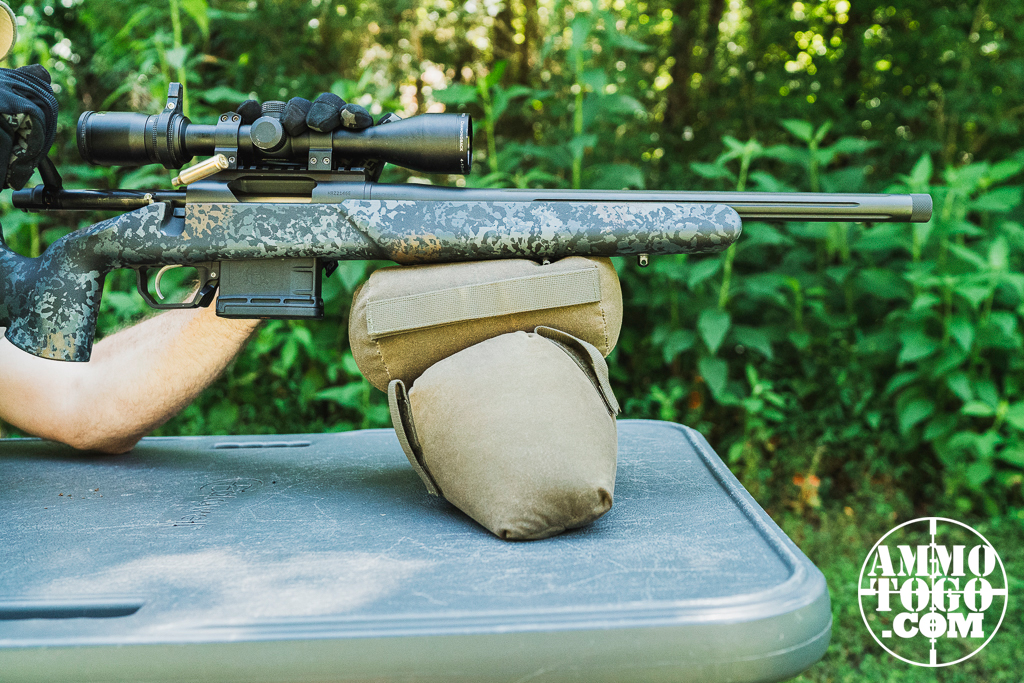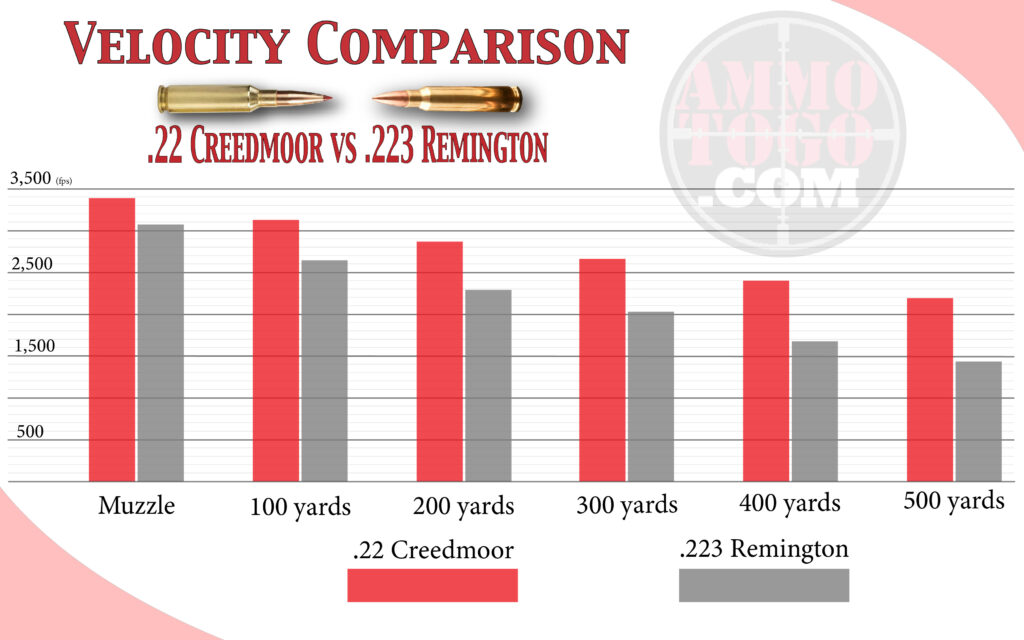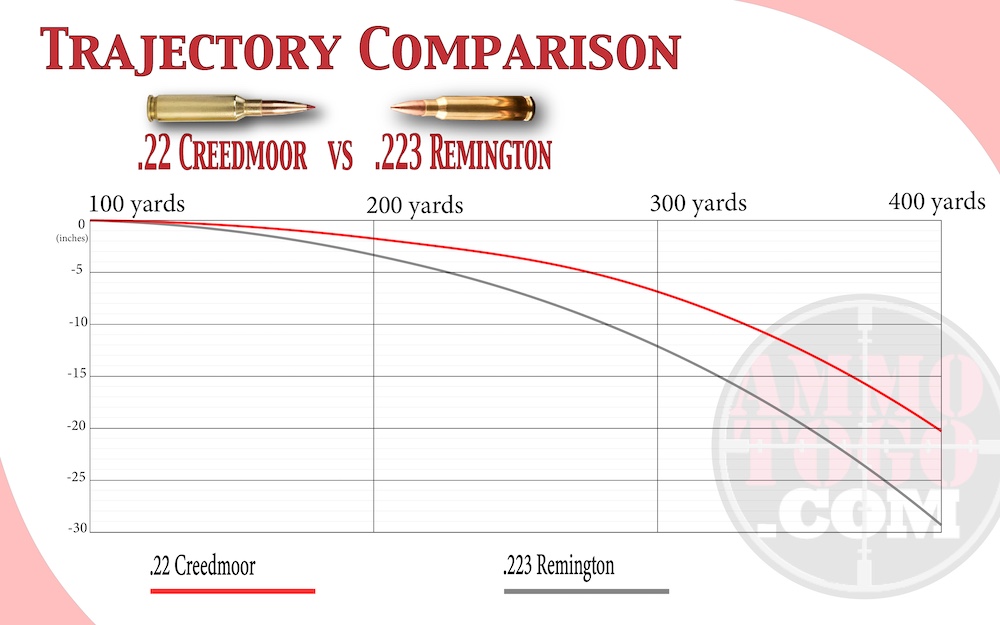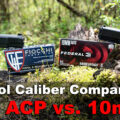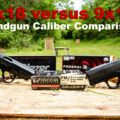An in-depth comparison of the venerable .223 Remington vs. the upstart 22 Creedmoor. These calibers share the same bullet diameter but are very different in the field. Find out how they compare and which is better for your shooting needs in this guide.
In use since the 1960s, the .223 Remington is the most popular centerfire rifle cartridge in the country. Few rounds ever approach the .223’s level of widespread use and high-volume sales.
Released commercially in 2023, the .22 Creedmoor is gaining attention as a fast, straight-shooting varmint round.
The new Creedmoor is not trying to usurp the .223 Remington. This advanced round shares the same bullet diameter, but that’s where the similarities end.
One (the Creedmoor) is made for flat long-range shooting, especially varmint and predator hunting. The other (the Remington) is best for moderate-range, high-volume shooting. They have different cases, different weights, and are fired from different rifles.
Primary Difference Between 22 Creedmoor vs 223
22 Creedmoor is generally loaded with a heavier bullet that’s about 10% faster. As a result, 22 Creedmoor’s trajectory is flatter but you’ll endure more recoil when firing it relative to the .223 rounds in a comparable rifle.
Now, for the details between these calibers.
.22 Creedmoor vs .223 Rem: Specs
Size, Shape, and Bullet Weights
| .22 Creedmoor | .223 Remington | |
|---|---|---|
| Bullet diameter | .224 inches | .224 inches |
| Neck diameter | .254 inches | .253 inches |
| Shoulder diameter | .462 inches | .354 inches |
| Rim diameter | .468 inches | .378 inches |
| Case length | 1.92 inches | 1.76 inches |
| Overall length | 2.825 inches (Varies by bullet) | 2.26 inches |
| Bullet weight | 60 - 90 grains | 35 - 77 grains |
| Typical firearm | Bolt-action rifle | AR-15 semiautomatic rifles |
While the bullet diameter is the same, the .22 Creedmoor is a larger round. It has a thicker and longer case, and also has longer bullets. These differences are significant. For example, the shoulder diameter of the .22 Creedmoor case is .462 inches, while the Remington is .354 inches.
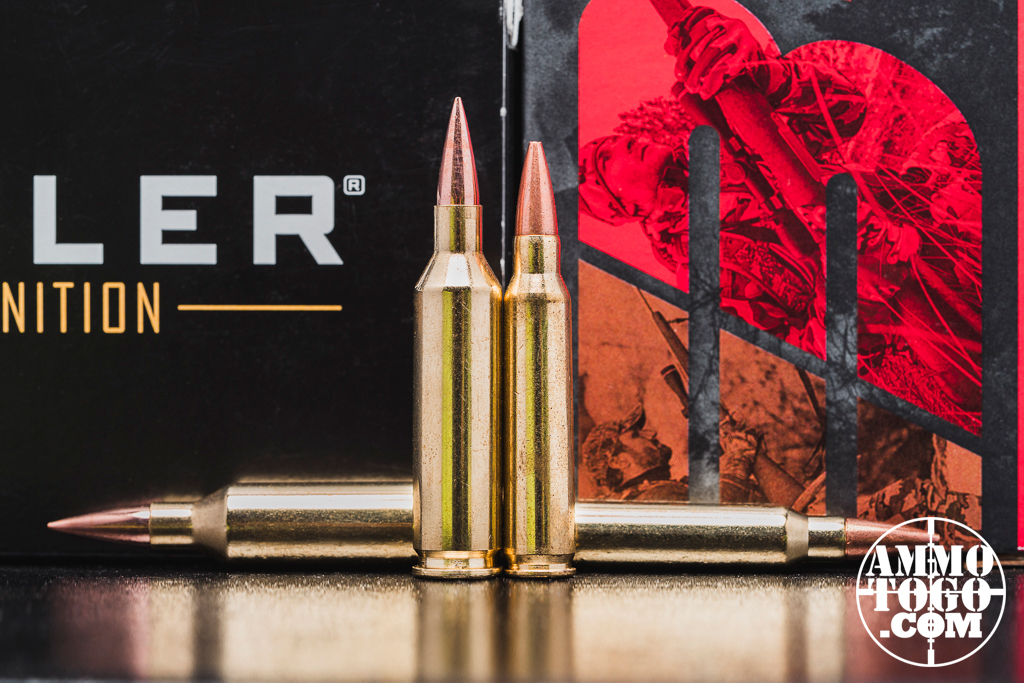
With a larger case, the .22 Creedmoor can handle larger bullets. There is plenty of overlap (some specialty .223 rounds go above 100 grains), but most .22 Creedmoor rounds are within 60 to 90 grains, while most .223s are between 35 and 77 grains. The most common weight for a .223 bullet is 55 grains, while the vast majority are around 50 to 60 grains. Basically, the typical .22 Creedmoor bullet is heavier than the typical .223.
Market Conditions
The .223 Remington, along with the 5.56x45mm NATO (the military sibling), is the most popular centerfire rifle round in the country. Every major manufacturer has multiple options for the .223, while only a select few are currently offering .22 Creedmoor ammo. Things may change as the round increases in popularity, but as of now it’s limited to makers that include Hornady and Copper Creek Cartridge Company.
Rifle Type
The .223 Remington is deeply linked with modern sporting rifles and AR-15 semiautomatic firearms, while the .22 Creedmoor is currently available only with bolt-action rifles. If you prefer a specific rifle type, you have already made a choice regardless of ballistics.
.22 Creedmoor vs .223 Remington: Ballistics
Now let’s examine the velocity, energy, and downrange trajectories of these rounds. We selected five specific products from each cartridge and logged their stats, then calculated the averages for a better indication of each round’s potential.
Velocity
| 22 Creedmoor | Muzzle | 100 Yards (fps) | 200 Yards (fps) | 300 Yards (fps) | 400 Yards (fps) | 500 Yards (fps) |
|---|---|---|---|---|---|---|
| Copper Creek 60-Grain V-Max | 3,600 | 3,196 | 2,829 | 2,491 | 2,177 | 1,886 |
| Copper Creek 70-Grain VLD | 3,490 | 3,207 | 2,943 | 2,695 | 2,459 | 2,236 |
| Mead Industries 77-Grain BTHP | 3,277 | 3,007 | 2,753 | 2,514 | 2,286 | 2,071 |
| Hornady 80-Grain ELD-M | 3,285 | 3,076 | 2,877 | 2,687 | 2,505 | 2,330 |
| Copper Creek 90-Grain A-Tip | 3,200 | 3,029 | 2,866 | 2,708 | 2,556 | 2,408 |
| Average | 3,370 | 3,103 | 2,854 | 2,619 | 2,397 | 2,186 |
| 223 Remington | ||||||
| Federal 50-Grain Varmint & Predator | 3,325 | 2,839 | 2,402 | 2,006 | 1,653 | 1,355 |
| Sellier & Bellot 50-Grain FMJ | 3,182 | 2,756 | 1,363 | 2,003 | 1,674 | N/A |
| Remington 55-Grain Accu-Tip | 3,240 | 2,805 | 2,410 | 2,049 | 1,721 | 1,437 |
| Federal 64-Grain Power-Shok | 3,050 | 2,682 | 2,342 | 2,027 | 1,740 | 1,473 |
| Winchester 77-Grain PDX1 Defender | 2,500 | 2,236 | 1,988 | N/A | N/A | N/A |
| Average for 223 Rem | 3,059 | 2,664 | 2,301 | 2,021 | 1,697 | 1,426 |
Both of these cartridges offer excellent speed, but it’s clear that the .22 Creedmoor is the faster option, both at the muzzle and downrange. There is a bit of overlap, but overall the .22 Creedmoor has higher speeds, especially downrange. Downrange velocity was, in fact, a goal for the cartridge; with speeds above 2,000 fps at 500 yards, the designers appear to have succeeded.
Winner: .22 Creedmoor
If you know anything about ballistics, or physics in general, you could have guessed this result. The .22 Creedmoor has a heavier bullet and faster speed, which inevitably means more energy. As .22-caliber rounds, neither of these is an overwhelming load, but the .22 Creedmoor’s power is impressive; about 800 ft-lbs of energy at 500 yards is a proud mark for any bullet.
Winner: .22 Creedmoor
Trajectory
| 22 Creedmoor | 100 Yards (Drop in Inches) | 200 Yards | 300 Yards | 400 Yards | 500 Yards |
|---|---|---|---|---|---|
| Copper Creek 60-Grain V-Max | 0 | 1.3 | 6.7 | 16.9 | 33.7 |
| Copper Creek 70-Grain VLD | 0 | 1.3 | 6.2 | 15.9 | 30.4 |
| Hornady 80-Grain ELD-M | 0 | 1.4 | 6.4 | 29.9 | 49.1 |
| Copper Creek 90-Grain A-Tip | 0 | 1.7 | 7.5 | 17.9 | 33.2 |
| Average | 0 | 1.4 | 6.7 | 20.2 | 36.6 |
| 223 Rem | |||||
| Federal 50-Grain Varmint & Predator | 0 | 2.8 | 11.9 | N/A | N/A |
| Sellier & Bellot 50-Grain FMj | 0 | 2.6 | 11.5 | 29.2 | N/A |
| Remington 55-Grain AccuTip-V | 0 | 2.9 | 12 | N/A | N/A |
| Federal 64-Grain Power-Shok | 0 | 3.3 | 13.1 | N/A | N/A |
| Winchester 77-Grain PDX1 Defender | 0 | 4.2 | N/A | N/A | N/A |
| Average for 223 Rem | 0 | 3.2 | 12.1 | 29.2 | N/A |
Note: Not all trajectory stats start at a muzzle height of 0.
The .223 Remington is an effective round at roughly 200 yards. But, as we have seen, after this distance speed and energy start to decline rapidly. So too does the trajectory. It’s not an inaccurate round, it’s simply made for different uses. If you want flat shooting and high consistencies at 400 to 500 yards, the .22 Creedmoor is more reliable.
Winner: .22 Creedmoor
Recoil
Because the .223 Remington has lighter muzzle energies and is fired from a semiautomatic rifle, it’s safe to assume that the round will have a lighter recoil. The .22 Creedmoor is far from the hardest-hitting round, but it will deliver a stronger kick than the .223 Remington.
Summary of These Terrific Twos
These are very different .22-caliber rounds; each one has its own unique advantages…
Advantages of the .22 Creedmoor:
- Impressive speed and energy at 400 and 500 yards
- Straight-line trajectories
- Excellent for long-distance varmint and predator hunting
Advantages of the .223 Remington:
- Rounds available from all major manufacturers
- Affordable pricing
- Fired from modern sporting rifles and AR-15s
We can safely say that the .22 Creedmoor will not replace the .223 Remington as the go-to round for high-volume rifle shooting. It won’t even try. But, as a deadly accurate long-range varmint and target round, it could be the next sensation at the range and in the field.
The Place for .22-Caliber Ammunition
Looking for top-quality .22-caliber rifle rounds for varmint hunting and high-volume target shooting? Visit ammotogo.com and place your order today!



